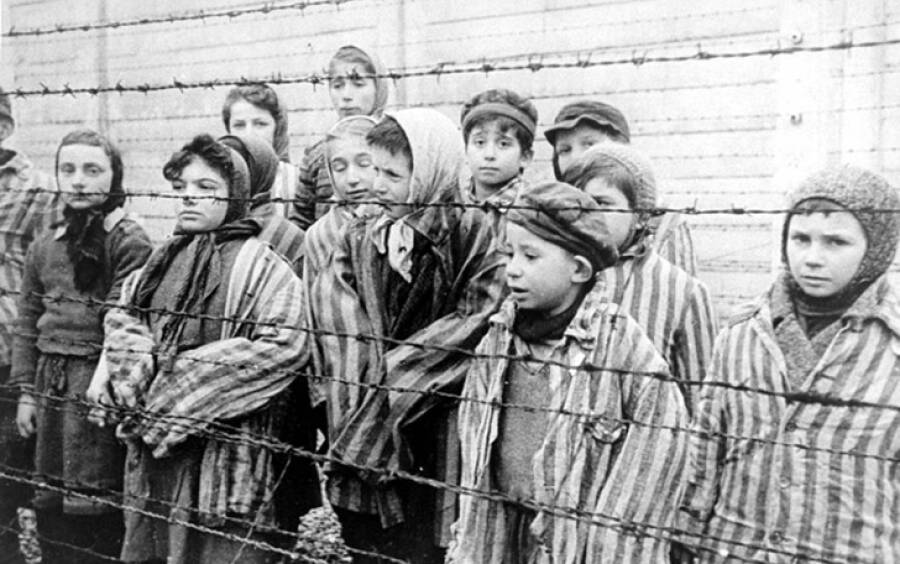Подлинники – о нацистских преступлениях в Европе

Российское военно-историческое общество начинает публикацию документов Центрального архива Министерства обороны РФ, посвященных освобождению Красной Армией европейских стран. Первая часть материалов относится к зверствам нацистов на территории Европы. РВИО посвящает данную публикацию Международному дню освобождения узников фашистских концлагерей (International Day of Fascist Concentration Camps Prisoners Liberation), который отмечается 11 апреля.
Эти документы заинтересуют и ученых, и более широкую аудиторию. Особенно важно, чтобы их смогло прочитать молодое поколение россиян и европейцев. Нацистские преступления не имеют срока давности и не должны быть забыты. Иначе миру вновь грозит опасность геноцида военнопленных, мирных жителей и целых народов.
Специалистами РВИО проведена большая работа по отбору документов, относящихся к теме освободительной мисси Красной армии в 1944-1945 годах.
Настоящая подборка включает рассекреченные документов частей и соединений 1-го Белорусского фронта, 1-го Украинского фронта, 60-й, 65-й армий и других частей фронтов, в которых отложились свидетельства о нацистских лагерях смерти Собибор, Освенцим, Треблинка, Майданек, а также лагерях для военнопленных. Донесения Членов Военных советов фронтов в Ставку ВГК, проливают свет на чудовищные преступления гитлеровцев. В актах геноцида против узников концлагерей участвовали не только немцы, но их пособники из числа коллаборационистов. В материалах присутствуют: опросы освобождённых военнопленных, донесения советского командования о фактах уничтожения узников непосредственно перед освобождением лагерей, впечатления участников событий, допросы нацистов и их пособников.
В документах представлены подлинные материалы, фотографии и описания событий, характеризующие весь тот ужас и страдания, которые заключала в себе нацистская машина смерти.
Работа Российского военно-исторического общества по публикации документов, касающихся освободительной миссии Красной Армии, будет продолжена. Это позволит не только ученым и специалистам, но также любителям истории и широкому кругу интересующихся граждан использовать эти материалы для увековечения подвига наших солдат, принесших в Европу мир и остановивших массовое истребление целых народов.
Ознакомится с разделом можно по ССЫЛКЕ
Summary
On the eve of April 11, when a memorable date is being celebrated around the world, the International Day of Fascist Concentration Camps Prisoners Liberation, the Russian Society for Military History (further – RSMH) publishes on the histrf.ru web-portal the first part of the documents selected by specialists of RSMH in Central Archive of the Ministry of Defense of the Russian Federation.
These documents will be interesting both for scientists and a wider audience. It is especially important that the younger generation of all Europeans can read them. Nazi crimes have no statute of limitations and should not be forgotten. Otherwise, the world will be again in danger of the mass killings of prisoners of war, civilians and entire nations.
RSMH specialists conducted a lot of work on the selection of documents related to the theme of the liberation mission of the Red Army in 1944-1945.
This selection includes declassified documents of units and formations of the 1st Belorussian Front, 1st Ukrainian front, the 60th, 65th armies and other units liberating the death camps (or places they had existed) of Sobibor, Auschwitz, Treblinka, Majdanek, as well as prisoner of war camps. The reports of the members of the Military Council of the Fronts to the Supreme Command Headquarters shed light on the atrocities of the Nazis. Interviews with eyewitnesses testify to the horrific crimes against humanity carried out by the Nazis in concentration camps. The acts of genocide against their prisoners involved not only Germans, but their collaborators from Germany’s allied countries. The materials include: polls of released prisoners of war, reports of the Soviet command about the facts of the elimination of prisoners (such documents were released immediately after the liberation of the camps), impressions of participants in the events and interrogations of the Nazis and their accomplices.
The documents present genuine material, photographs and descriptions of events that characterize all the horror and suffering that the Nazi death machine hid in itself.
The work of the RSMH to publish documents will continue. This will allow a wide circle of citizens to deeply understand the role of Soviet soldiers in bringing peace to Europe and stopping the Nazi policy of mass extermination.
Обложка: https://regnum.ru
Новое
Видео
Памятные даты военной истории России
Грюнвальдская битва. Памятные даты военной истории России
Памятные даты военной истории России
Танковое сражение под Прохоровкой. Памятные даты военной истории России
Памятные даты военной истории России
Освобождение Минска. Памятные даты военной истории России
